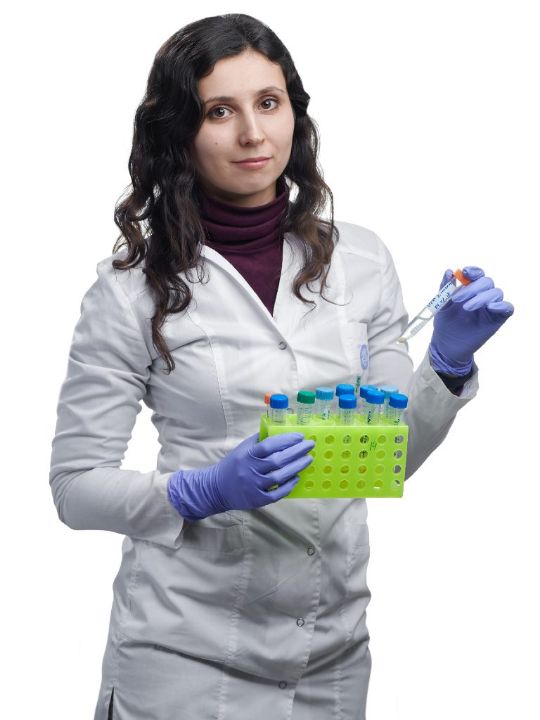We Solve medical tasks using working aptamers
Aptamer Selection, Characterization, 3D Structure Simulation And Target Identification
We will perform identification and verification of yours aptamers targets, just click the button
identification and verification of probable protein targets are needed
IF YOU DO NOT KNOW THE APTAMER TARGET AND NEED TO IDENTIFY IT
Identification of the most probable protein targets of the aptamer is performed using mass spectrometry. AptaBiD technology is used to isolate target proteins from the cell mixture. An array of these proteins obtained after mass spectrometric studies is processed, after which a list of the most likely targets is formed.
IF YOU KNOW THE APTAMER TARGET AND NEED TO VERIFY IT
We offer indirect methods for target verification using antibodies specific to the intended target. The first method is based on the competitive replacement of aptamers by appropriate antibodies from the cell surface. And the second method allows you to visualize areas of joint localization of aptamers with antibodies in histological sections.
STAGES OF IDENTIFICATION AND VERIFICATION of targets
1
Isolation of proteins specific to aptamers from the sample containing cells or minced tissue using AptaBiD technology.
2
Identification of proteins in the sample by mass spectrometry.
3
Analysis of mass spectrometric data and identification of the probable protein targets.
4
Verification of the probable target with the method of competitive replacement of aptamers by antibodies using flow cytometry.
5
Verification of the probable target using the method of colocolization of aptamers and corresponding antibodies by laser scanning microscopy.
WE USE INNOVATIve TECHNOLOGIES
APTABID
AptaBiD allows us to isolate proteins that bind to specific aptamers. With the help of this method it becomes possible to determine the direct target of the aptamer.
TISSUE SELEX
The method for generating aptamers which are capable to bind with tissue targets.
CELL SELEX
This technology involves the selection of aptamers for the whole cells. This allows us to obtain aptamers that are able to bind to the target in its native conformation.
LIGS
The method identifies highly selective aptamers against a predetermined epitope expressed on the cell surface. Monoclonal antibody interacts with its cognate epitope to outcompete and replace specific aptamers from an enriched SELEX pool.
SAXS
This method is used for determination of the nanoscale density differences in the sample. This makes it possible to determine the size and shape of the macromolecule.
HT SELEX
HT SELEX is the method that increases the sensitivity over traditional cloning and sequencing applications and reduces the number of rounds required to achieve detectable enrichment.
THE RESULTS YOU'LL GET
SCIENTISTS INVOLVED IN THE STUDY

YURIJ GLAZYRIN

ANNA BLAGODATOVA

OLGA KOLOVSKAYA


 .
.